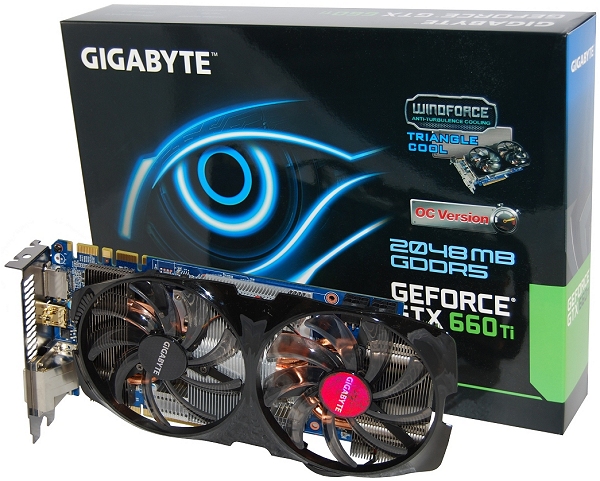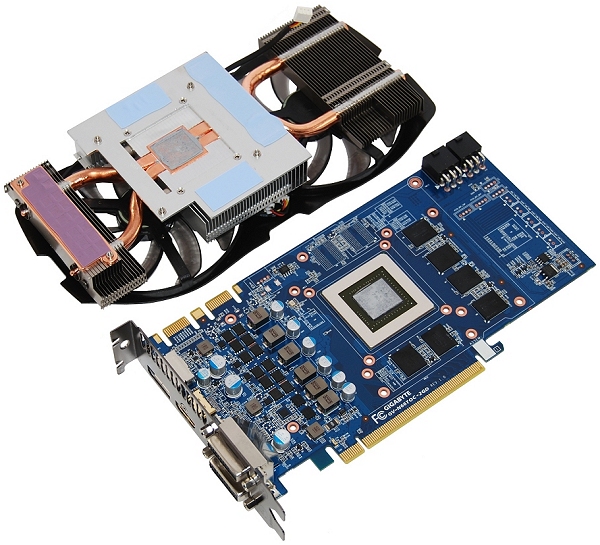Nvidia GeForce GTX 660 Ti Review - lopezbeturped1953
Nvidia's GeForce GTX 680 may have swiped the performance crown aside from AMD's Radeon HD 7970 earlier this year, but at $500, the first Kepler offer was inaccessible to most system builders. That state of affairs improved slightly in Crataegus oxycantha with the GTX 670, a best-selling option among enthusiasts for delivering an incredible value. In our examination, IT provided GTX 680-like performance at a $100 discount.
Although nothing matched the GTX 670's price-to-performance ratio, the $400 entrance fee remained a steep combined. Gamers who wanted to spend less were left with the $230 HD 7850, the $300 HD 7870 or a card from Nvidia's last-gen card. By nature, it would only live a matter of time before Nvidia tried to fulfill this gap with tons of hearsay about a GeForce GTX 660 Ti in the pipeline for a mid to late summer launch.
Well, we'Re here and the rumors well-tried true: Nvidia's untried GeForce GTX 660 Ti has its crosshairs attack the HD 7870. Assuming information technology's priced competitively (more on this in a second), the GTX 660 Ti seems like it could put a real pain connected AMD's oblation, atomic number 3 IT features the same DNA as existing Kepler products and boasts the same number of CUDA cores and texture units as the GTX 670.

Nvidia has been beautiful aggressive with Kepler's pricing and we'd seek the GTX 660 Ti to retail for about $300. Considering the fact that we gestate IT to birth execution connected par with the $350 HD 7950, this could spell catastrophe for AMD, prompting the outfit to deal out one of these days another monetary value cut. As fun as it is to hypothecate, let's march on and see where our valuation board from GB stands...
Gigabyte's GTX 660 Ti in Particular
There isn't an official Nvidia reference control panel for the GTX 660 Ti, leaving information technology up to manufacturing partners to come sprouted with their own products. This means PCB designs and length could vary significantly betwixt card game.
We were sent Gigabyte's tackle the GTX 660 Si (GV-N66TOC-2GD). The display panel's PCB measures 8.46" (21.5cm) weeklong, which is rather compact on its own, but the cooler pushes that to 9.84" (25.0cm), slightly longer than the HD 7870 reference aim. At this length, Gigabyte's GTX 660 Ti should easily fit in most ATX cases as IT's still overmuch shorter than higher-end card game such as the HD 7970.

The GTX 660 Si's GPU ships with 1344 CUDA cores and 7 SMX units, 1 SMX unit and 192 CUDA cores less than the GTX 680 but the same number as the GTX 670. The TAU count also matches the GTX 670, while the ROPs have been reduced from 32 to 24.
The memory subsystem has changed from the GTX 680 and GTX 670, which have four 64-bit controllers for a 256-second broad-brimmed bus, to one 64-tur controller with a 192-bit bus. Combine that with 2048MB of GDDR5 memory clocked at 1502MHz (6008MHz DDR) and you wind up with a bandwidth of 144.2GB/s, which isn't defective, though information technology is 33% less than the GTX 670 and that's where the performance difference lies.


Nvidia's specification for the establish clock frequency is 915MHz, patc the average boost clock speed is 980MHz. GB has enlarged this to 1032MHz and 1111MHz, while the retentivity operates at the standard 6008MHz.
What really makes G's iteration unique is its WindForce 2X solution. The cooler employs dual 75mm ultra quiet PWM fans connected to a customized shroud. Under these fans is a large heatsink consisting of three main parts connected by 8mm copper heatpipes.

At the heart of this setup is the biggest block, which has a unique Random-access memory heatsink to cool the GDDR5 modules and "Triangulum Cool" technology that uses a serial of fins and triangular clip modules to better direct airflow finished the heatsink.

Gigabyte says its Triangulum Chilly technology can reduce temperatures by sprouted to 10% over traditional designs, so we'ray keen to see just how cool this visiting card runs.
To feed the card enough juice, Nvidia's specification calls for dual 6-pin PCI Express power connectors -- identical to the HD 7870, 7850 and GTX 670. Nvidia also says those wishing to use a single GTX 660 Ti nontextual matter card should have a 450 watt power supply or greater.


Naturally, the GTX 660 Ti supports SLI (3-way SLI therein case), so information technology has a twin of connectors. The only opposite ports are on the I/O panel where you'll find a pair of dual-link DVI-I connectors, a single HDMI 1.4a port, and a DisplayPort 1.2 socket.
Source: https://www.techspot.com/review/565-nvidia-geforce-gtx-660-ti/
Posted by: lopezbeturped1953.blogspot.com


0 Response to "Nvidia GeForce GTX 660 Ti Review - lopezbeturped1953"
Post a Comment